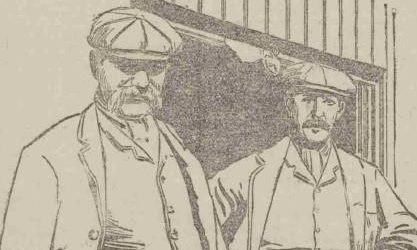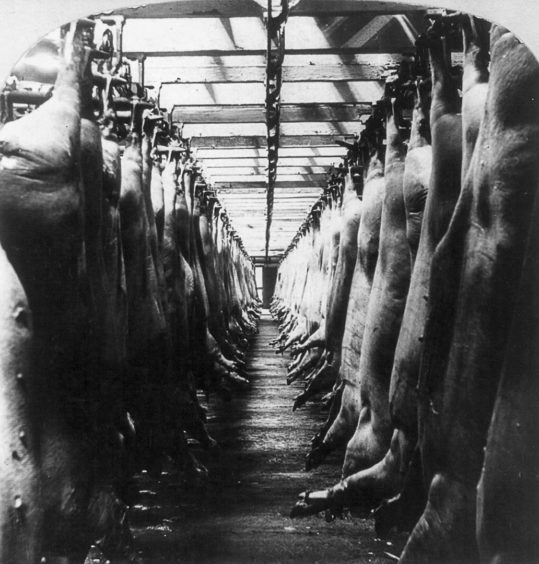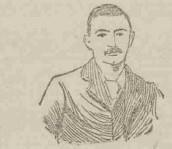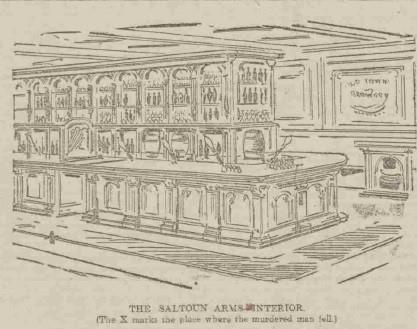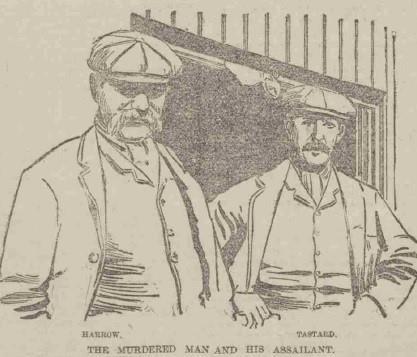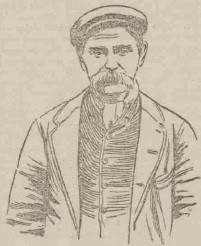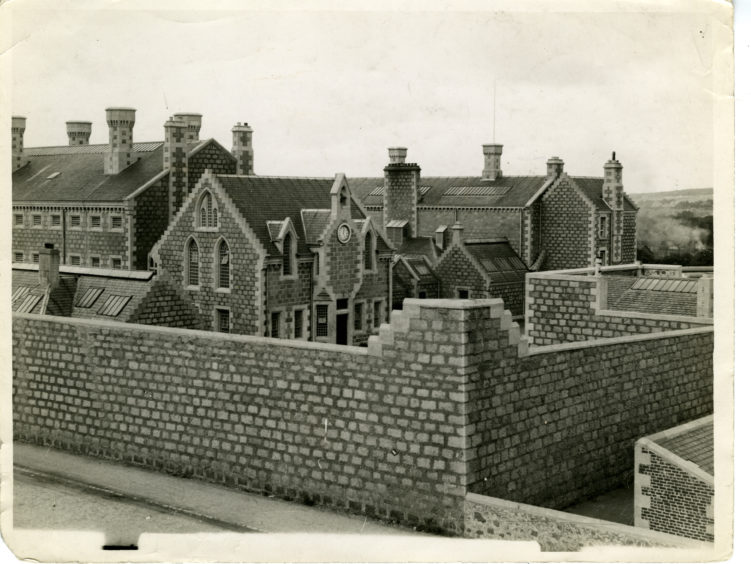They were three men who finished work at a slaughterhouse and ended up being involved in another one later the same evening.
What should have been a relaxing conclusion to a gruelling shift of physical labour at the Wales Street premises in Aberdeen instead turned into one of the most notorious double murders ever carried out in the Granite City.
There had been no indication of lethal violence when James Harrow, 33, William Tastard, 44, and John “Jeek” Rae, a youngster whose age was unknown, walked into the Saltoun Arms late in the evening of January 9 1901 at the licensed premises, owned by Cornelius Mearns, on the corner of Park Street.
Yet, within the space of a few minutes, Harrow unveiled a knife which he had wrapped in a newspaper, lashed out at Tastard and inflicted fatal injuries, before critically wounding another butcher, David Ewing, 29, who had tried to intervene in the melee.
Harrow, whom witnesses subsequently recalled as acting like a man possessed, then took the knife to his other drinking partner, Rae. But the latter manged to throw his jacket over the weapon and fled, quite literally, for his life.
And, almost immediately, a police whistle sounded to the hoarse cry of “Murder”.
Aberdeen Journal reported on ‘Terrible Tragedy’ in the city
The next morning, the Aberdeen Journal extensively covered the grisly details of what had transpired at the pub, as the police, led by Chief Constable Thomas Wyness, accompanied by Dr James Moncur, rushed to a scene of carnage.
The paper’s headlines: “Terrible Tragedy in Aberdeen”, “Butcher Stabbed to Death” and “Another Man Dangerously Wounded” were followed by news of the “speedy apprehension of the alleged murderer who escaped, but was caught within the hour”.
It continued with a description of the injuries by Ch Con Wyness who declared: “I have seen a few ugly [knife] gashes in the course of my 40 years’ experience, but never did I see such a wound on a man who is still alive. Why, you could have put your hand in it.”
Despite being at death’s door, Mr Ewing was taken to the infirmary in Woolmanhill, and the father of a 10-year-old daughter continued to battle for the next few days.
However, complications arose and he finally succumbed to “traumatic delirium and inflammation of the lungs” on January 13.
What lay behind the violence in the Saltoun Arms?
Harrow, a moody, individual, who was arrested at 61 Park Street, where he lived with his mother, had shown no indication of being angry with his victims prior to the attack.
On the contrary, the barman and customers later reported that the three butchers, who marched into the bar at around 10.30pm, did not become involved in any argument.
Yet, after taking offence at a remark from Mr Tastard, he pounced on the older man, produced his weapon and stabbed him twice – in the neck and in the chest.
Both blows were delivered with the intensity one might have expected from a burly slaughterhouse worker. And, even after he was apprehended at 11.45 pm while preparing his supper, he showed no emotion while being cautioned by officers.
The Evening Express later remarked that he seemed indifferent to what was happening, doing nothing beyond confirming his name, age, address and occupation.
And he remained similarly calm and unflustered as he was locked up in a cell.
The dastardly ill fortunes of the Tastard clan
The first victim was a bachelor who lived with his elderly mother at 13 Marischal Street, which lay near to the docks, and it emerged this was merely the latest tragedy which had befallen the ill-starred Tastard clan.
His mum had been the owner of a butcher’s shop in Shiprow, and she was well known in the local community for cooking a range of tasty dishes, including potted head and haggis, but she had retired by the time of her son’s murder.
In the previous two years, she had not only been widowed and lost both her daughter and her son-in-law, but her eldest son, James, had drowned in a bathing accident at the Falls of Feugh in Banchory two decades earlier.
William Tastard’s funeral took place on Sunday January 13 and the scale of the commemorations were unprecedented.
As the Aberdeen Journal reported the following morning: “From end to end, Union Street was packed with people, the police estimating that upwards of 40,000 [more than one in four of the city’s 153,000 population] witnessed the cortege pass along the streets to the churchyard.
“From the steps of the Music Hall, the Young Men’s Christian Institute, and from many vantage grounds, the sympathetic spectators witnessed the pathetic procession.”
Friendship turned to hatred between Harrow and Tastard
It was difficult for investigators in the case to find any reason why Harrow had resorted to such appalling acts of violence.
Acquaintances described him as a loner, a man who preferred his own company as he scouted the racing pages in search of a punt, while nursing a schooner or two of beer.
Almost right up to the events in January 120 years ago, he and Mr Tastard were not only on friendly terms, but had actually enjoyed dinner together at the victim’s home.
He was the foreman butcher, while Harrow, who had worked at the slaughterhouse since his teenage years, had proved himself a reliable, if morose, member of staff.
However, in the second half of 1900, he had found his workload diminishing, while jobs were handed out to other people and he complained volubly about his treatment.
Mr Tastard denied there was any favouritism, but Harrow started feeling persecuted and a grudge gradually developed between the two parties. The animosity intensified during the festive season when he was heard making threats against the foreman, but although these were conveyed to the latter, he refused to take them seriously.
And so, what was originally planned as a late New Year celebration became a bloodbath.
The trial took place at the High Court in Aberdeen
In the build-up to the trial of James Harrow, which attracted a plethora of attention in the newspapers, there was a slightly surreal tone to one of the headlines in the Aberdeen Journal which must have raised eyebrows in a few north-east communities.
It read simply: “Boer attack on Aberdeen”.
However, this location was not made of granite, but was actually a South African village where a commando force had been repelled by the gallantry of a few British troops.
But, soon afterwards, Harrow was brought to the High Court on March 29 to face two counts of murder. He had pleaded not guilty at the pleading diet 10 days earlier where his counsel lodged a special defence that the accused was insane when he had committed the murders.
Gordon Highlanders with bayonets kept the peace
The court proceedings were scheduled to begin at 10.30am, but a large crowd had congregated outside the building in Castle Street from daybreak and, in order to keep the place secure, a guard of honour was established by the front door by several Gordon Highlanders, with fixed bayonets, as the proceedings commenced.
Harrow, his head bowed, emerged into the courtroom via a trapdoor from the cells below, but his legal team were aware that no less that 23 witnesses had been summoned to give evidence for the prosecution.
There were 11 defence witnesses, but only two were called to give evidence and the fact they were both medical men – Professor Matthew Hay and Dr William Reid, the medical superintendent at Aberdeen Royal Asylum – offered an indication of what lay ahead.
As they explained the accused’s actions, his paranoia and persecution complex became clear. He suspected Mr Tastard of being “an assassin”. And he was convinced the foreman had tried to poison his whisky while the pair drank whisky together.
Very quickly, as the press realised, there was only going to be one conclusion.
Hallucinations and illusions were caused by heavy drinking
Prof Hay calmly, forensically, provided abundant details about Harrow’s state of mind before his rampage in the Saltoun Arms. He revealed how the 33-year-old had been plagued by hallucinations, had “morbid suspicions” of his work colleagues and had heard voices telling him he had to kill his “enemies” or be killed himself.
According to the late journalist and author Norman Adams: “Dr Reid said the accused was still labouring under various illusions and hallucinations and was of unsound mind and quite irresponsible for his actions. He was incapable of understanding the charge against him and unable to instruct his defence.
“Both doctors agreed that excessive drinking could cause permanent insanity and the butchers of Wales Street appeared to have been heavy drinkers. In the course of their long working day, they might each consume about half a bottle of spirits in local pubs [every day] after starting at four in the morning.”
There wasn’t much more for the experts to discuss. Following an hour-long hearing, Lord McLaren found Harrow to be insane and ordered him to be detained indefinitely.
The Aberdeen Journal said the next day: “With a bang, the trapdoor closed and the people of Aberdeen had presumably seen the last of the man whose mad crime so much shocked the community. In this case, everybody seemed to know everything.”
Harrow was taken to Craiginches Prison in a “Black Maria” and was later confined at Perth Prison in a wing for the mentally disturbed.
He died there in September 1907.
